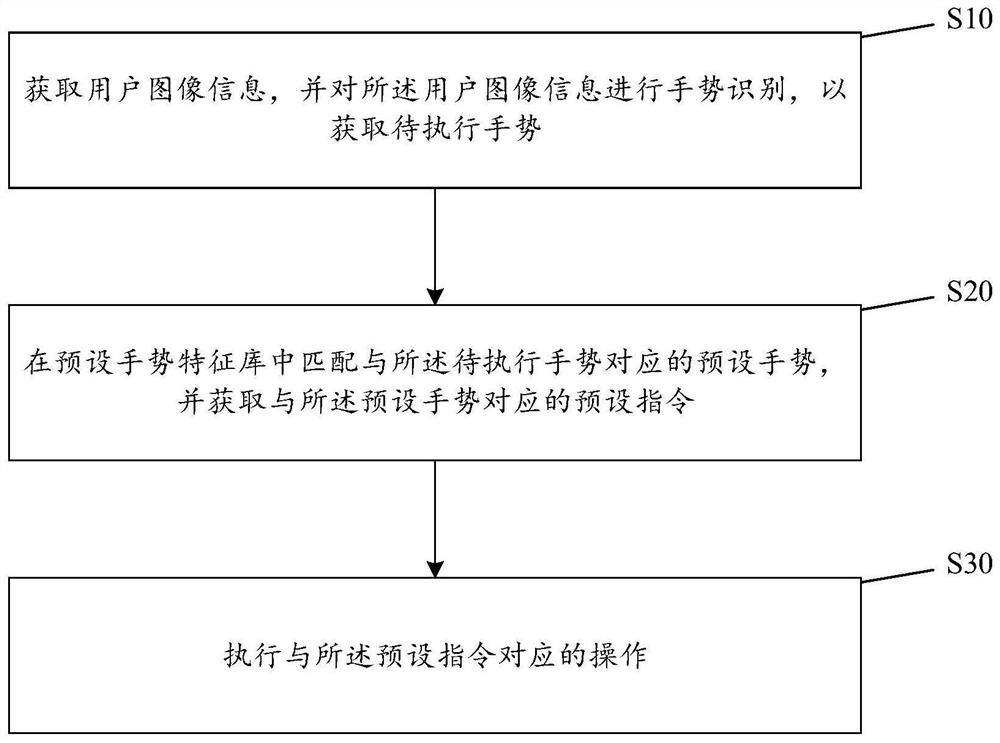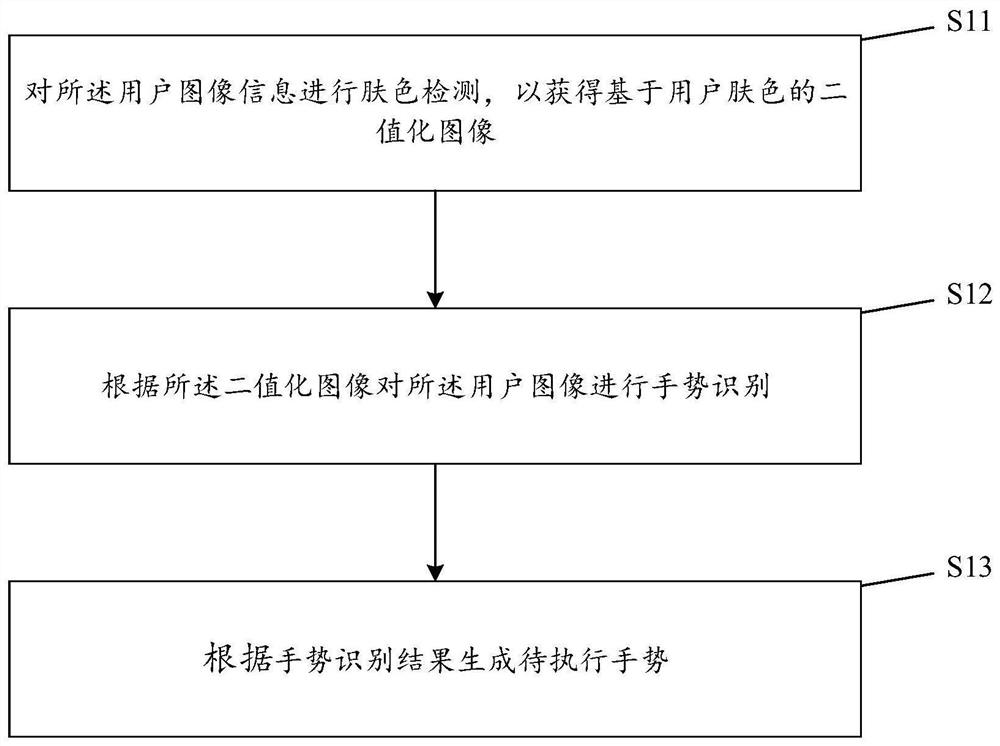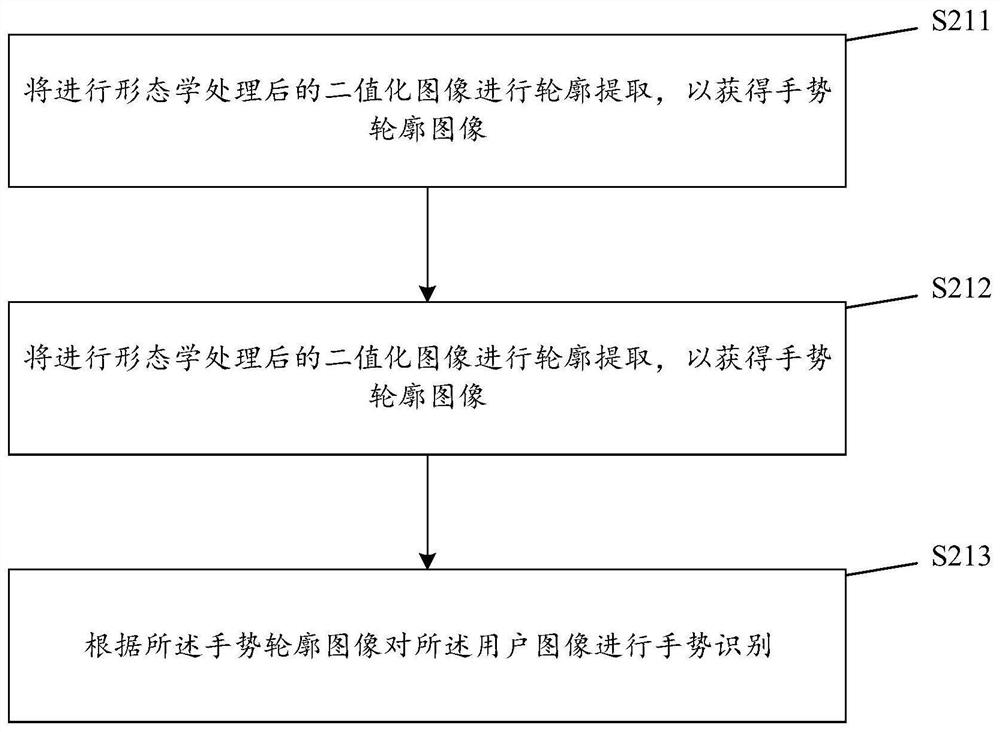Display terminal control method, display terminal and computer readable storage medium
A display terminal and control method technology, applied to computer components, input/output of user/computer interaction, calculation, etc., can solve problems such as complex control of display terminals
- Summary
- Abstract
- Description
- Claims
- Application Information
AI Technical Summary
Problems solved by technology
Method used
Image
Examples
Embodiment Construction
[0042] It should be understood that the specific embodiments described here are only used to explain the present invention, not to limit the present invention.
[0043] The present invention provides a display terminal control method, referring to figure 1 , figure 1 It is a schematic flowchart of the first embodiment of the display terminal control method of the present invention, the method includes steps:
[0044] Step S10, acquiring user image information, and performing gesture recognition on the user image information to acquire gestures to be executed;
[0045] The user image information may be acquired through the camera of the display terminal, and before gesture recognition is performed on the user image information, the user image information may be preprocessed to improve the accuracy of gesture recognition.
[0046] Step S20, matching a preset gesture corresponding to the gesture to be executed in a preset gesture feature library, and acquiring a preset instruct...
PUM
 Login to View More
Login to View More Abstract
Description
Claims
Application Information
 Login to View More
Login to View More - R&D
- Intellectual Property
- Life Sciences
- Materials
- Tech Scout
- Unparalleled Data Quality
- Higher Quality Content
- 60% Fewer Hallucinations
Browse by: Latest US Patents, China's latest patents, Technical Efficacy Thesaurus, Application Domain, Technology Topic, Popular Technical Reports.
© 2025 PatSnap. All rights reserved.Legal|Privacy policy|Modern Slavery Act Transparency Statement|Sitemap|About US| Contact US: help@patsnap.com



